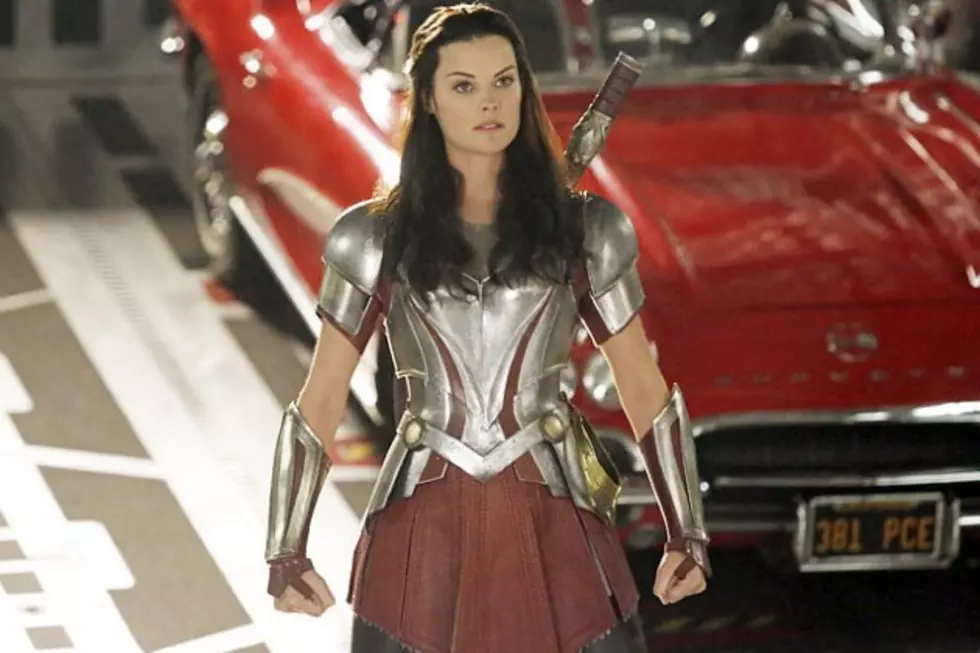
Michael Kupperman: A Comics Voice that Defies Categorization

"WTF? I guess I don't count, again."
That was cartoonist Michael Kupperman's tweeted response a few weeks ago to an exhaustive article in The Comics Journal about one-man anthologies. Well, it was almost exhaustive. It didn't include Kupperman, whose Tales Designed to Thrizzle has been the most consistently funny comic series on shelves since its start in 2005. Following comments by Kupperman and others, TCJ added a mention of Kupperman to the piece.
On the one hand, it was a surprising omission. Kupperman's work is unique, absurd, and constantly evolving in new and hilarious ways. More people should be reading it. On the other hand, it's not really fair to categorize Kupperman with other cartoonists because there's nobody else like him.

You can apply some vague labels to what Kupperman does; the Thrizzle series from Fantagraphics and his 2000 HarperCollins book Snake 'n' Bacon's Cartoon Cabaret both fit neatly under the banner of "anthology," as they change gears from one scene and character to the next every few pages. You could also probably apply the label of "indie" to Kupperman's comics. Up through the fifth issue of Thrizzle, it was all black-and-white, and Kupperman handles every aspect of their creation himself (though he does have an editor). And perhaps the easiest label to apply is "humor."
But that handful of classifications doesn't come close to really describing what reading Kupperman's comics is like.

Thrizzle has its share of recurring characters -- Snake 'n' Bacon, Twain and Einstein, The Mannister, the elusive Granpa -- but those characters don't exactly grow or develop like the ones in Chris Ware's Acme Novelty Library or in the Hernandez Brothers' Love and Rockets. They aren't supposed to. The second we learn more than Kupperman gives us about why Albert Einstein and Mark Twain are a pair of buddy cops or two college friends digging a hole to the center of the Earth, the absurdity of the concept gets drowned in narrative coherence. Kupperman isn't interested in that.
Last fall, Kupperman released an entire hybrid prose-and-comics book about Twain called Mark Twain's Autobiography 1910-2010, which imagines the American icon as a basically immortal cultural gadfly. In Einstein's first mention in the book, Twain simply states his old friend Albert Einstein phoned him up. There's no need to elaborate on how or why they know each other; Kupperman wants to get straight into the laboratory ghosts and ant colony visits. Kupperman's humor doesn't rest in relationships; it's invested in concepts.

You might compare Kupperman's anthologies to the comics (or comix) of R. Crumb, who never worried too much about whether what Mr. Natural did made sense or adhered to some timeline. But I wouldn't call Thrizzle a counter-culture comic. He isn't pushing an agenda or commenting on Modern Life. The culture Kupperman is obssessed with is the long-past, weird culture of the 1950s, when a robot designed for foreplay and filmstrips about deadly bathtubs weren't too far removed from what you might really see.
He also thinks the TV show Quincy is really funny (and he's right).
That kind of stuff makes it hard to describe Kupperman's comics as just plain humor. It isn't parody, really, like so many humor comics (anything that veers toward parody in Kupperman comics ends up going to places that take it well beyond). It isn't situational comedy, or gag strips, or literary satire. These are comics where a Dick Tracy analogue notices a fly living on his wrist, watching his wristwatch TV, or in which Pablo Picasso chases around a talking hamburger and threatens to kill it. It's absurdity on a level no one else is even attempting.

As I write this out, I realize it sounds like Kupperman trades in Family Guy-style randomness, and I want to stress that there's something well beyond that in Kupperman's pages. For all I know, Kupperman may have drawn the concepts of "sex blimps" or a comic about the adventures of St. Peter out of a hat somewhere, but there's a sense of experimentation that takes these ideas somewhere beyond simply tossing a concept at you and expecting you to think it's brilliant.
For instance, the newest issue of TDtT, last fall's issue #7, jumps from a goofy examination of how deadly bathtubs are, to an EC Comics-style morality tale about the dangers of bathtubs to a fake ad for shower heads (after which it pivots to Quincy and some photo comics). There's a sort of dream logic to it.
Kupperman is in a genre all his own. He has a voice so distinct that it's easy to think that he doesn't necessarily fit in a box with other comics creators. After all, reading a story in most anthologies often tends to lead to a particular set of reactions: "What's going to happen to her next?" or "That guy's got it rough" or maybe "That's spot-on!"
Kupperman's work often leaves you wondering what led a man to team up a hissing snake with a talking piece of bacon, and how he made that idea so funny. After you stop laughing.
It isn't that he doesn't count. It's just that he's so utterly unique, it's hard to know where to count him.

More From ComicsAlliance









